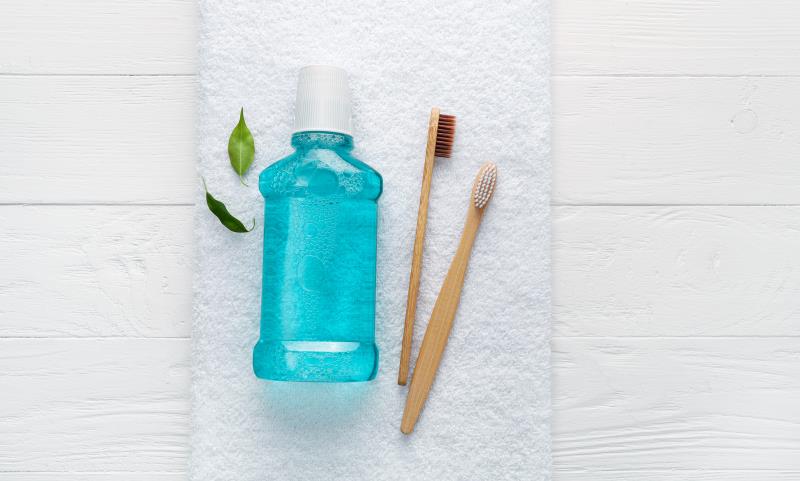
A chlorhexidine-based mouthwash may impact oral microbial diversity by increasing the bacteria responsible for lowering salivary pH, potentially increasing the risk of damage to the teeth and surrounding mucosa, a study has shown.
“[T]his study demonstrates that mouthwash containing chlorhexidine is associated with a major shift in the salivary microbiome, leading to more acidic conditions (ie, lower salivary pH),” said the researchers. “Our results … are relevant, since decreased pH in saliva is associated with demineralization of tooth enamel and risk of caries, tooth loss, and other dental problems.”
The effects of chlorhexidine in salivary pH has only been explored in vivo and in vitro. [Acta Odontol Latinoam 2014;27:66-71; J Oral Microbiol 2015;7:26197] “We believe this is the first study to look at the impact of [chlorhexidine] use on the whole oral microbiome in human subjects,” said study author Dr Raul Bescos from the University of Plymouth in Plymouth, England, in a press release.
Thirty-six subjects were instructed to rinse their mouth for a minute twice daily with a placebo mouthwash for 7 days, followed by another weeklong regimen with a chlorhexidine mouthwash. Subjects were advised to use the same toothpaste throughout the trial duration and instructed to fast the night before laboratory testing. Participants were also cautioned against caffeine-containing beverages at least 24 hours prior to laboratory visit. [Sci Rep 2020;10:5254]
Salivary evaluation revealed significant increases in the species belonging to the Firmicutes and Proteobacteria families, and a reduction in the Bacteroidetes phyla following use of chlorhexidine mouthwash (false discovery rate<0.001 for all).
Bacteroidetes, the second most abundant phyla in the oral cavity, includes genera responsible for maintaining oral acid-base conditions. [Cell Metab 2018;27:757-785] The drop in Bacteroidetes count may signify that chlorhexidine promotes acidification of saliva, noted the researchers.
Chlorhexidine use also led to a lower oral nitrate-reducing capacity, which in turn, led to lower saliva and plasma nitrite availability and increased salivary nitrate concentration. “[T]he detrimental effect of chlorhexidine on oral nitrite synthesis is another key point requiring further attention since nitrite has been shown to [inhibit] the growth of periodontal bacteria, which can also help to reduce the acid production from these strains,” said the researchers. [Br Dent J 2016;221:657-666]
Risk or benefit?
The researchers underscored the need for more exploration to determine if the alterations in the oral microbiome will increase the risk of developing oral diseases. “[It remains unclear] whether these microbial changes suggest a shift towards a healthy oral environment or [an increased] risk of oral disease … [A]dditional studies are required to investigate bacterial communities during different disease states [eg, gingivitis, periodontitis] with and without chlorhexidine.”
The researchers also suggested that bacterial communities in distinct oral microbial niches should be evaluated as the effects of chlorhexidine may differ in these areas.
“As dental clinicians, we need more information on how mouthwashes alter the balance of oral bacteria so we can prescribe them correctly. This paper is an important first step in achieving this,” said co-author Dr Zoe Brookes from the Peninsula Dental School also at the University of Plymouth.
Bescos also addressed the role of chlorhexidine in the current pandemic. “In the face of the recent COVID-19 outbreak, many dentists are now using chlorhexidine as a prerinse before doing dental procedures. We urgently need more information on how it works on viruses.”